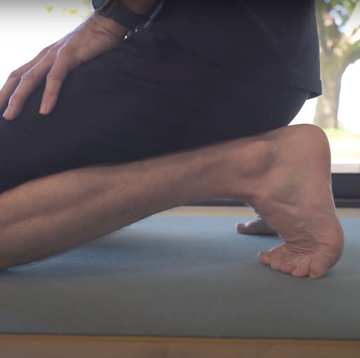Like most runners, I have a good leg and a bad leg. On good days, I can run my commute and train for marathons, on bad days, I collapse to one side and compensate through my pelvis as I run. To get to the bottom of why this happens, and what I can be doing to help, I visited Sports Rehabilitation Physiotherapist Jordane Zammit Tabona at her clinic Function360, What is overpronation.
Function360 discuss common running injuries, symptoms and prevention:
Resting heart rate:
Injury prevention is a complex issue, and even if we cannot fully prevent injuries, being aware of how they usually develop and what to do after the first niggles appear, will allow you to look after your body better and avoid small issues developing into more serious ones.
Running injuries tend to develop from overuse; most of them are preventable, or at least manageable through a quick recovery window if – and a big if – you listen to your body! Unfortunately, most people ignore the first signs and wait until they are unable to carry on running before seeking treatment.
Overuse injuries are more common when associated to poor movement and biomechanical faults as they put your body in compromised positions.
How to tackle tight hamstrings?
Look out for the first signs of something being ‘off’. Your body will generally send you signs that things are not ok, niggles, tightness, excessive soreness or fatigue.
How to spot and fix IT band syndrome
3 signs to look out for:
1. Valgus collapse:
Most knee issues stem from a ‘valgus’ collapse, which is a word that describes your knee moving inwards, towards the centre of your body when you are under load. Knees respond to what your hips and ankle dictate: glute weakness and poor foot mechanics are the usual culprits.
Symptoms: Knee pain; depending on how your body is trying to compromise, this can be along the front and/or in the inner/outer sides.
Treatment: It goes without saying that this is not something which ‘will eventually go away’ by itself: whether your valgus is created by pronation at the ankle (your arch collapsing excessively) or weakness at the glutes, you will need some corrective and rehab to be able to continue running pain-free. The longer you wait, the more your body tries to compromise at other areas.
2. Excessive tightness on one side of the body
Some soreness post workout is normal, but if one side of your body gets a lot tighter than the opposite, your body is doing something we wouldn't normally expect. Running happens in the sagittal plane, even when you are turning, you are moving forward, which means both sides should share the work equally.
If one side is getting tighter than the other on a regular basis (and you don’t consistently run on a track in the same direction), you need to figure out why this tightness is occurring before the it develops into an injury.
3. Shin pain
Pain along your shins, either in the inner side or along the front generally develops into shin splints unless proper rest and care are taken when the first signs develop. Trying to push through it out never works!
7 on London Wall:
1. exercises that can help you maintain a healthy running stride: A good exercise to do if you spend most of your day sitting behind a desk, kneel with one foot in front of you and actively tuck your tailbone under until you feel the stretch. Hold this for 30 seconds on each side and repeat throughout the work day.
2. A simple foam roller routine for runners: Lying face down, sqeeze your bum together and lift one straight leg behind you as far as is comfortable. Hold this for ten seconds and do ten reps on each side. Aim to engage the glutes before the hamstrings and do not lift the hips as you move. Do not worry if your leg shakes as you do this – it’s a sign you’re not using your glute muscles as you run.
3. Foot-strengthening exercises for runners: Lying on your back with bent knees, flatten your lower back into the floor and squeeze your lower abs gently. Hold this for 30 seconds and do 30 reps. Repeat this for three sets. Once you have built these muscles, extend the exercise by taking one leg off and holding it straight. Repeat this 15 times on each side.
4. Back pain from running? This could be why: Work on the gluteus medius by practising some squats with a heavy intensity resistance band (these can be purchased cheaply on Amazon). Put the band just above your knees and focus on keeping your chest up and sending your bum out behind you – don’t just bend forward from your hips. Use the band to keep the pressure on the outside of your knees to work on your glute and try and send your knees out over your 3rd and 4th toes. Do three sets of 15 reps.
5. Calf stretch: Standing on a step, let one heel hang off the back of the step and press it downwards to lengthen the calf with the knee straight. Repeat this with the knee bent. Hold the stretch for 2 minutes on each leg, in each position.
6. Bird-dog: Get on all fours and bring the right elbow in to meet the left knee, then extend both hand and leg away from the torso, keeping your hips parallel to the floor – be careful the side with the leg extended doesn’t rotate upwards. Focus on core stabilisation and squeezing the bum when the leg is fully extended. Do three sets of 10 reps on each side.
7. Foam rolling: Use a foam roller to target the outside of the hip and gluteal muscles. This doesn’t have to be time consuming – foam roll for 30 seconds on each area.














